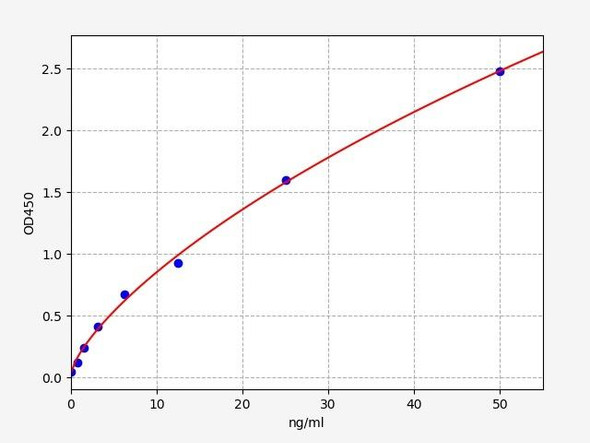Description
| Product Name: | SATB2 Rabbit mAb |
| Product Code: | CAB3491 |
| Size: | 20uL, 50uL, 100uL |
| Synonyms: | GLSS |
| Applications: | WB, IHC, IF |
| Reactivity: | Human, Mouse, Rat |
| Host Species: | Rabbit |
| Immunogen: | A synthesized peptide derived from human SATB2 |
| Applications: | WB, IHC, IF |
| Recommended Dilutions: | WB 1:500 - 1:2000 IHC 1:50 - 1:200 IF 1:50 - 1:200 |
| Reactivity: | Human, Mouse, Rat |
| Positive Samples: | U-87MG |
| Immunogen: | A synthesized peptide derived from human SATB2 |
| Purification Method: | Affinity purification |
| Storage: | Store at -20°C. Avoid freeze / thaw cycles. Buffer: PBS with 0.02% sodium azide, 0.05% BSA, 50% glycerol, pH7.3. |
| Isotype: | IgG |
| Sequence: | Email for sequence |
| Gene ID: | 23314 |
| Uniprot: | Q9UPW6 |
| Calculated MW: | 83kDa |
| Observed MW: | 100KDa |
| UniProt Protein Function: | SATB2: Binds to DNA, at nuclear matrix- or scaffold-associated regions. Thought to recognize the sugar-phosphate structure of double-stranded DNA. Transcription factor controlling nuclear gene expression, by binding to matrix attachment regions (MARs) of DNA and inducing a local chromatin-loop remodeling. Acts as a docking site for several chromatin remodeling enzymes and also by recruiting corepressors (HDACs) or coactivators (HATs) directly to promoters and enhancers. Required for the initiation of the upper- layer neurons (UL1) specific genetic program and for the inactivation of deep-layer neurons (DL) and UL2 specific genes, probably by modulating BCL11B expression. Repressor of Ctip2 and regulatory determinant of corticocortical connections in the developing cerebral cortex. May play an important role in palate formation. Acts as a molecular node in a transcriptional network regulating skeletal development and osteoblast differentiation. Chromosomal aberrations involving SATB2 are found in isolated cleft palate. Translocation t(2;7); translocation t(2;11). Defects in SATB2 are a cause of cleft palate isolated (CPI). A congenital fissure of the soft and/or hard palate, due to faulty fusion. Isolated cleft palate is not associated with cleft lips. Some patients may manifest other craniofacial dysmorphic features, mental retardation, and osteoporosis. A chromosomal aberration involving SATB2 is found in a patient with classical features of Toriello-Carey syndrome. Translocation t(2;14)(q33;q22). Belongs to the CUT homeobox family. |
| UniProt Protein Details: | Protein type:DNA-binding Chromosomal Location of Human Ortholog: 2q33 Cellular Component: nucleoplasm; transcription factor complex; nuclear matrix; cytoplasm; histone deacetylase complex Molecular Function:protein binding; sequence-specific DNA binding; chromatin binding Biological Process: chromatin remodeling; transcription, DNA-dependent; commitment of a neuronal cell to a specific type of neuron in the forebrain; cartilage development; neuron migration; positive regulation of transcription from RNA polymerase II promoter; negative regulation of transcription from RNA polymerase II promoter; palate development; embryonic pattern specification; osteoblast development; embryonic skeletal morphogenesis Disease: Glass Syndrome |
| UniProt Code: | Q9UPW6 |
| NCBI GenInfo Identifier: | 13634020 |
| NCBI Gene ID: | |
| NCBI Accession: | Q9UPW6.2 |
| Molecular Weight: | 81kDa |
| NCBI Full Name: | DNA-binding protein SATB2 |
| UniProt Protein Name: | DNA-binding protein SATB2 |
| UniProt Synonym Protein Names: | Special AT-rich sequence-binding protein 2 |
| Protein Family: | DNA-binding protein |
| UniProt Gene Name: | SATB2 |
| UniProt Entry Name: | SATB2_HUMAN |






